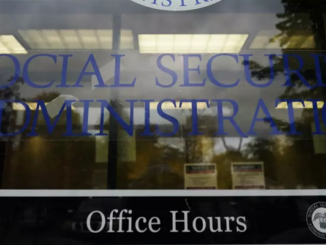
by Charles Blahous
Among public policy issues, Social Security is especially beset by myths and urban legends. These myths inhibit the enactment of legislation necessary to close its substantial financing shortfall. Press, public and policy makers alike would do well to disabuse themselves of the following widely circulated canards.
Myth #1: Social Security is not an entitlement. This is one of the more baffling myths in circulation of late. One encounters it on social media, on op-ed pages, even from members of Congress. Social Security is not only an entitlement program, it is the largest and most prototypical federal entitlement program. Virtually any credible glossary of federal budget terminology will point to Social Security as the leading example of an entitlement (specifically, an entitlement is a program in which payments are obligated to beneficiaries according to eligibility criteria set in law, without requiring annual legislation to appropriate funds). Those who object to Social Security being referred to as an entitlement are in effect trying to change the definition to mean something other than what it always has. Whether a program is an entitlement has nothing to do with whether beneficiaries made previous contributions to it. In fact, in Social Security’s case, it’s precisely the individual entitlement to benefits arising from those contributions that makes it an entitlement program.
Myth #2: Social Security wouldn’t be in financial trouble if politicians hadn’t stolen and spent its money. There is actually a small kernel of truth underlying this myth; specifically, Social Security trust fund reserves are by law invested in US Treasury securities, which finance federal government spending. Furthermore, economists who have studied the issue generally conclude that government access to those revenues stimulated more federal spending than would have occurred otherwise. But this phenomenon has nothing do with Social Security’s shortfall. Social Security still owns all that money and earns interest on it. Whenever Social Security tax revenues fall short of its benefit obligations, as they have since 2010, Social Security taps both interest and principal of its trust funds to pay benefits. Social Security’s shortfall exists despite the government’s repaying those funds to Social Security, not because it won’t. The program’s financing problems arise instead from its benefits exceeding the revenue (including interest) that it generates.
Myth #3: Participants have paid for their benefits. Again, there is a kernel of truth in this myth. Workers covered by Social Security contribute payroll taxes, which establish an entitlement to benefits for themselves and certain dependents. However, this does not mean they have paid for the full amount of their scheduled benefits. Many beneficiaries receive far more in benefits than their own contributions could ever fund, while others receive less. But more importantly, Social Security has a shortfall precisely because in the aggregate, workers have not paid for their benefits: total scheduled benefits well exceed what workers’ tax contributions, plus interest, can finance. So, the existence of benefits has been earned, but the scheduled amounts have not. Benefit schedules would need to be substantially reduced from current law in order to match the benefit amounts workers have actually funded.
Myth #4: Social Security is solvent until the 2030s, so there is still plenty of time to fix it. One of the most misguided aspects of much press reporting on Social Security finances is the routine citation of its projected insolvency date (2034 in the latest report) as a proxy for its financial condition. How soon Social Security’s trust funds run out, and how soon we must act, are two entirely different things. By the time its trust funds are depleted, annual income and costs will be so far apart that there is no realistic chance of legislation closing the shortfall. For example, even if all new retirees in 2034 were denied benefits, delaying corrective action until then would leave Social Security without enough revenue to continue sending the checks on time to those previously receiving them. When we must act is a function of how long the problem is still soluble, not when the funds finally run out. The window of opportunity for correction is closing now, if it hasn’t closed already.
Myth #5: Because Social Security is self-financing, it doesn’t add to the federal budget deficit. It is true that Social Security is technically “off budget” and has its own separate tax base and trust fund. But because the trust funds are invested in the federal Treasury, the general government fund plays a substantial role in Social Security financing. In the years before 2010 when Social Security ran a surplus, its operations reduced federal borrowing from the public. Since 2010, as Social Security’s costs have exceeded its tax revenue, the federal government has been running larger deficits to fund the payments it owes to Social Security so that the program can continue to pay full benefits. A personal finance analogy might help. Suppose that during one month, you charge something to your credit card; then in subsequent months, you pay off the credit card debt, plus interest. In a certain sense you simply borrowed money from your bank that first month, then in the following ones you paid it back. But during the months you are paying off that credit card debt, you tangibly experience a new and real financial strain, despite the fact that you were previously on the receiving end of credit. It’s the same with the federal budget. The fact that the federal budget benefited from Social Security surpluses in the past doesn’t make its ongoing deficit-worsening outlays, during the years it pays Social Security back, any less real.
Myth #6: Taxing rich people more by raising the cap on taxable wages will fix the problem. There’s a statutory cap on each worker’s annual earnings subject to Social Security taxes — $128,400 this year and indexed to grow automatically in most years. Above the cap, workers neither pay additional taxes nor accrue additional benefits, reflecting the program’s design as a floor of income protection rather than an all-encompassing pension benefit. Whenever Social Security’s shortfall is discussed, someone usually suggests raising this cap, to collect more taxes from the rich. That could certainly be done in the context of a solvency plan, but it doesn’t solve much of the problem. Raising the taxable maximum from today’s level all the way to about $350,000 in 2022 would only eliminate about 14% of the structural deficit, in part because a worker’s benefits are linked to his tax contributions and thus the tax increase would generate higher benefits for the well-off. That cost increase could of course be prevented by changing the benefit formula on the high-income end; nevertheless, the point remains that without benefit formula changes, a tax cap increase by itself doesn’t accomplish very much.
Myth #7: Social Security privatization is a live option. During election seasons there are always some partisans claiming that Social Security is at risk of being “privatized.” That was never true, and the claim is particularly absurd now. Many years ago when Social Security was running surpluses, presidents such as Bill Clinton and George W. Bush suggested that workers be given the option of saving them in personal accounts to shelter that money from being used to finance federal spending (see myth #2). None of those proposals involved privatization, but instead would have allowed for individual saving within a publicly administered system. That opportunity vanished in 2010 when Social Security began running cash deficits. Since then there have been no surplus Social Security contributions to save, and every program tax dollar collected now is immediately sent out the door to pay current benefits. Despite the fact that this has long been a dead issue, occasional “privatization” fear-mongering continues.
The late Senator Daniel Patrick Moynihan was fond of saying, “everyone is entitled to their own opinions, but they are not entitled to their own facts.” Social Security policy and politics are treacherous enough even when everyone agrees to respect the facts. If we are to see Social Security through to financial safety, we can no longer afford to indulge these seven myths.
Charles Blahous is the J. Fish and Lillian F. Smith Chair and Senior Research Strategist at the Mercatus Center, a visiting fellow with the Hoover Institution, and a contributor to E21. He recently served as a public trustee for Social Security and Medicare.



